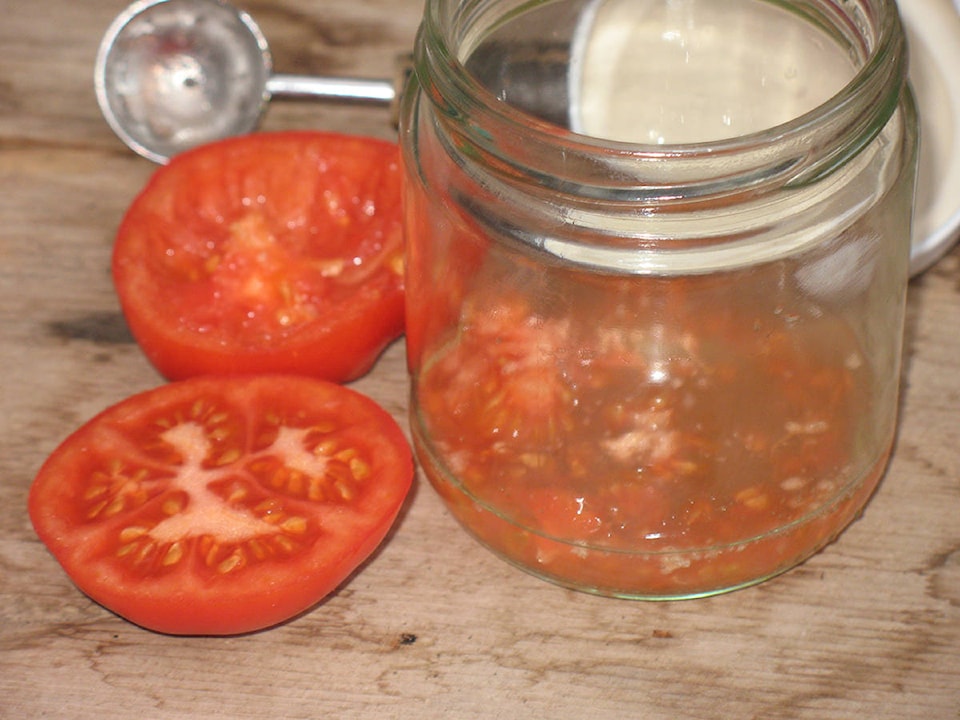By Mary Lowther
I used to imagine that saving seeds was an arcane process best left to agricultural professionals who laboured in massive, brilliantly lit greenhouses, toiling over row on row of perfect plants with magnifying glass and monocle to select only the finest varieties to fill their colourful packets. After all, the authorities assure us that seed collection requires many plants in order to produce viable, healthy strains worthy of propagation, and anything less results in inbred stock. Think of a vegetable equivalent to the Romanov dynasty.
Over the years, however, I have come to doubt the omniscience of the horticultural alchemists and their need for an industrial complex to provide next year’s crop. Thus I progressed to the potential heresy of growing some plants specifically to harvest the seed from varieties that have done well in my specific climate and soil conditions.
My garden grows in 1,000 square feet, and my presumably inbred stock nonetheless produce mighty fine fruit and vegetables. The Buttercrunch lettuce whose ancestor I first grew 20 years ago still fills our salad bowls every spring. Seeds from an organic Delicata squash I bought three years ago produced tasty gourds again this year.
I look for plants with qualities I want to foster, like lettuce and cabbage that don’t bolt early, or squash that store well. Given the predilection for some crops to cross-fertilize in a space as small as my backyard, I only grow one variety out to seed per growing season. Sometimes I intentionally cross-pollinate; last year I tried it with two varieties of corn, both of which were open pollinated, and the resulting seeds turned out great.
We can save money by growing our own seeds while acclimatizing them to our own microclimates and retaining characteristics we like. By dating our seed packets we know how fresh they are and can sow them as long as we like, just to see how long they remain viable.
Annuals like peas, beans, lettuce and radishes produce seed the same year they are planted, but biennials like cabbages and carrots must go through a winter before they go to seed. I follow advice from experienced propagators and ferment tomato, cucumber and squash seeds before I store them. I scrape seeds and pulp out of the fruit and put them into a jar along with enough water to well cover the seeds, then screw the lid on, shake up the slurry, loosen the lid and let the jar sit for three days. Apparently the lactic acid buildup destroys possible pathogens and the stored seed is less likely to mould. After three days I remove any floating seeds along with pulp, drain off the water and strain the seeds that have fallen to the bottom. I dry them on a flat tray out of the sun and store them in labeled packets in jars in my cold, dry pantry.
Three years ago I grew out garlic seeds and each July I’ve pulled them up and re-planted them with larger separation between them the following October. Last month they were about half an inch in diameter when I replanted them, so I’m keeping my fingers crossed. This year I pulled off asparagus seeds when they turned red and have dried and saved them to sow next spring. I was going to pull out the female plants I got the seeds from because males apparently outperform females significantly (it had to happen sometime!) but the season got away on me, the unpicked seeds all dropped off and now I can’t remember which is which.
If you’ve been careful to avoid cross-pollination, you might want to share your seeds, given how abundantly overachieving plants produce. However, if you get seeds from someone who is not a commercial grower, make sure that they have followed protocols to avoid cross pollination. Ask them how they grew their seed. I once bought a packet of seed labeled “zucchini” at a Seedy Saturday table and it grew into a cross between a zucchini and a winter squash that didn’t taste good. It pays to know your sources.
Please contact mary_lowther@yahoo.ca with questions and suggestions since I need all the help I can get.
